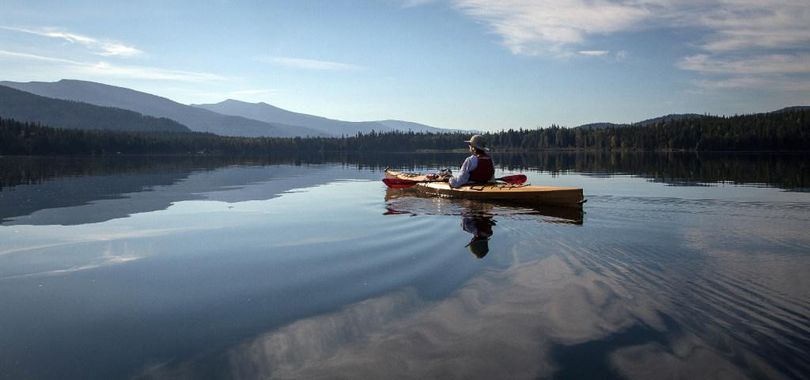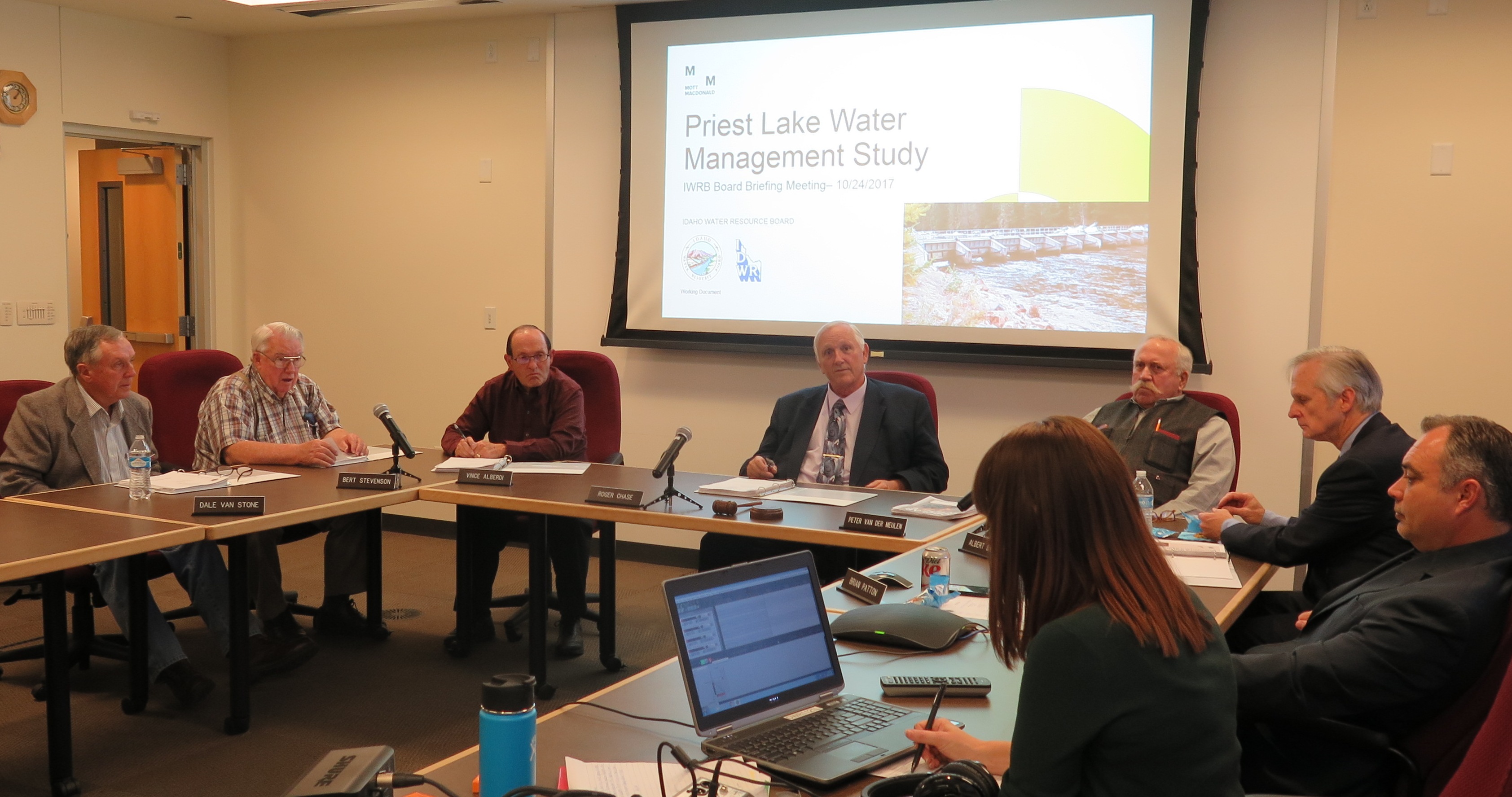State study says Priest Lake needs $5M worth of work on Thorofare, outlet dam, breakwater

Here's my full story from spokesman.com:
By Betsy Z. Russell
Priest Lake needs $5 million worth of work, to keep the narrow, 3-mile-long Thorofare between the upper and main lakes open to boats, and to increase the lake level in dry years to protect downstream flows out of the scenic North Idaho water body.
That’s the conclusion of a $300,000, state-sponsored study that examined everything from the history of the lake to its sediment flows, which have been increasingly making the Thorofare shallower and shallower.
“I think this is a good quality project,” said Dale Van Stone, a former Bonner County commissioner and the North Idaho member of the Idaho Water Resources Board, which received the study results Tuesday. “We always knew it was going to have a price tag. … It’s our job to try and get some money to try and get it to happen.”
 The board had high praise for the study, which was done by Mott Macdonald, an international engineering and consulting firm. During the course of the study, the consultants met with local and county officials, stakeholders and federal agencies, held two public open houses at Priest Lake, and did extensive outreach.
The board had high praise for the study, which was done by Mott Macdonald, an international engineering and consulting firm. During the course of the study, the consultants met with local and county officials, stakeholders and federal agencies, held two public open houses at Priest Lake, and did extensive outreach.
“This was an important part of the study, getting feedback from all of those folks and plugging it in,” Shane Phillips, a vice president with the firm from Edmonds, Wash., told the state water board.
Steve Klatt, former parks and waterways director for Bonner County and the county’s current road and bridge director, said of the price tag, “It will be worth it.”
“The use of the Thorofare for boating is sort of an intrinsic part of the Priest Lake boating experience,” Klatt said. Plus, he said the proposed upgrades would ensure water access to catastrophic fires in remote areas, and maintain both lake levels and downstream flows. “I think it’s just simply a good investment for the state of Idaho,” said Klatt, who traveled to Boise for the board’s meeting Tuesday.
Water board members said they’ve been in touch with area legislators, including Sen. Shawn Keough, R-Sandpoint, who co-chairs the Legislature’s joint budget committee, and Rep. Sage Dixon, R-Ponderay, and they’re supportive.
“The Legislature will have to make a sacrifice from the budget, sure,” said Roger Chase, water resources board chairman. “But when we look at the importance of this – we need to fix it. We’ve got a Legislature that understands water. We need to get this fixed and take care of it for the next 40 years, and the price is doable.”
The issue came to a head three years ago when a dry year forced the river below Priest Lake’s Outlet Dam to be reduced to a trickle, to protect the legally required minimum lake level during the recreation season. But that also threatened downstream interests, from fish habitat to river recreation.
“We were lucky that we got through it,” Chase said.
The study recommends significant changes to the Outlet Dam, which was built in 1978, that would allow the lake level to be kept up to 6 inches above its current minimum level during dry years. That would allow enough water storage to keep river flows downstream at the required minimum level.
This year was the opposite of a dry year – downstream flows were at half again the minimum flow at the dam, and in May, the lake already was 6 inches above the current minimum level without any changes to the dam.
Phillips said that allowed the study to look “in real time” at what that lake-level change would do. The verdict: It’s feasible.
Scientific studies determined that a full 6-inch increase in the lake level likely wouldn’t be needed, Phillips said, but 3 inches might not be enough. The study recommended raising the dam to allow the level to be up to 6 inches higher, allowing the flexibility for dam operators to keep the level where it needs to be – likely 3 to 4 inches above its current minimum level in dry years.
At 6 inches higher, Phillips said, “There’s the potential for some limited, low impact on beach use and structures.”
The outlet dam was first built in 1951; that’s when the lake went from all-natural to a managed lake system. It was reconstructed in 1978 to its present configuration.
A deteriorating wooden-slat breakwater at the bottom of the Thorofare has required major repairs roughly every seven to 10 years, Phillips said, and is now near the end of its service life. Because the breakwater is porous, sediment can flow both under it and between its slats, leading to sediment buildups that are worsened by interaction with currents and wind-caused waves.
As a result, portions of the Thorofare and areas outside its outlet in the lower lake have gotten as shallow as 2 feet.
The study recommends replacing the wooden breakwater with a new, impervious structure built from stone or metal, and both extending and slightly realigning it to redirect the sediment flows into deeper parts of the lake and halt the sand and silt buildup.
It also recommends dredging the Thorofare – which has been done periodically over the years, but rarely since the 1990s. The consultants recommended removing from 9,000 to 11,000 cubic yards of sand and gravel, and depositing it on the back of the new breakwater structure, which would shore it up and improve its ability to redirect sediment.
Phillips said a key to regulatory approval of the project will be that the dredged material is not simply being disposed of – it’s being relocated for a beneficial use.
“We went through a detailed analysis looking at the sources of sediment within the system,” he said. “It’s a very complex system.”
The study also included modeling for a “no action” alternative. Phillips said that would lead to continued “shoaling,” or deposits of sand and gravel making areas of the Thorofare and lake more shallow, leading to summer depths in those areas of less than 2 feet.
